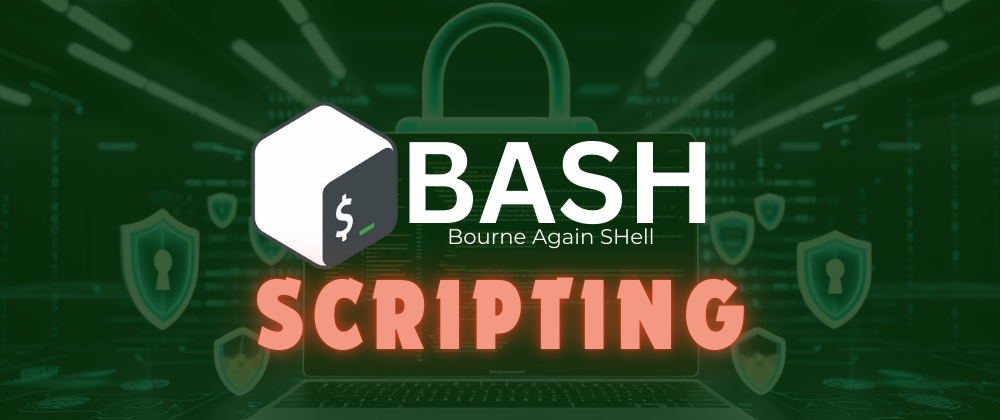- Published on
How to Get Started with Bash Scripting for Automation
- Authors
- Name
- Aditya Raj
- Dev.to
- Read on Dev.to

One of the most powerful tools for automation is Bash scripting. Whether you're a beginner or a seasoned professional, understanding Bash scripting can significantly boost your capabilities in cybersecurity.
Why Bash Scripting?
Bash (Bourne Again SHell) is a command language interpreter for the GNU operating system. It is widely used on Unix-like operating systems such as Linux. For cybersecurity professionals, Bash scripting offers several advantages:
- Automation of repetitive tasks: From scanning networks to analyzing logs, Bash can handle repetitive tasks efficiently.
- Flexibility: Bash scripts can interact with other tools and scripts, making them incredibly versatile.
- Control over the system: Bash provides low-level access to the operating system, allowing you to control various aspects of system behavior.

Getting Started with Bash Scripting
1. Understanding the Basics
Before diving into automation, it's essential to understand the basic syntax and commands of Bash. Here are a few fundamental concepts:
- Shebang (
#!): Indicates the script should be run in Bash. - Variables: Store data values for use in your script.
- Control Structures:
if,else,for, andwhileloops allow for decision-making and iteration.
Example of a simple script:
#!/bin/bash
echo "Hello, Cybersecurity World!"

2. Setting Up Your Environment
- Install a Linux distribution: Ubuntu, CentOS, or any preferred distro.
- Use a text editor: nano, vim, or graphical editors like VSCode with Bash extensions.
- Run your script: Use
chmod +x scriptname.shto make it executable, then./scriptname.shto run.
3. Creating Your First Automation Script
Start with a simple automation task, such as checking for open ports on your network.
#!/bin/bash
echo "Scanning open ports on localhost..."
netstat -tuln

4. Incorporating Security Tools
Enhance your scripts by integrating tools like nmap, tcpdump, or iptable commands for more sophisticated tasks.
#!/bin/bash
echo "Running nmap scan on target..."
nmap -A $1

5. Best Practices
- Comment your code: This makes it easier to understand and maintain.
- Error handling: Use
trapto catch errors and handle them gracefully. - Keep scripts modular: Write functions for reusable code blocks.
Real-World Applications in Cybersecurity
- Automated Network Scans: Regularly check your network for vulnerabilities.
- Log Monitoring: Automate the analysis of log files to detect anomalies.
- Backup and Recovery: Schedule regular backups of critical data.
Resources to Learn More
- Books: "Learning the Bash Shell" by Cameron Newham.
- Online Courses: Platforms like Udemy and Coursera offer comprehensive Bash scripting courses.
- Practice Platforms: Use sites like OverTheWire’s Bandit to practice your skills in a gamified environment.
Conclusion
Mastering Bash scripting can be a game-changer in your cybersecurity journey. It not only makes your work more efficient but also equips you with the skills to handle complex tasks with ease. Start small, practice regularly, and soon you'll be automating your way through cybersecurity challenges.